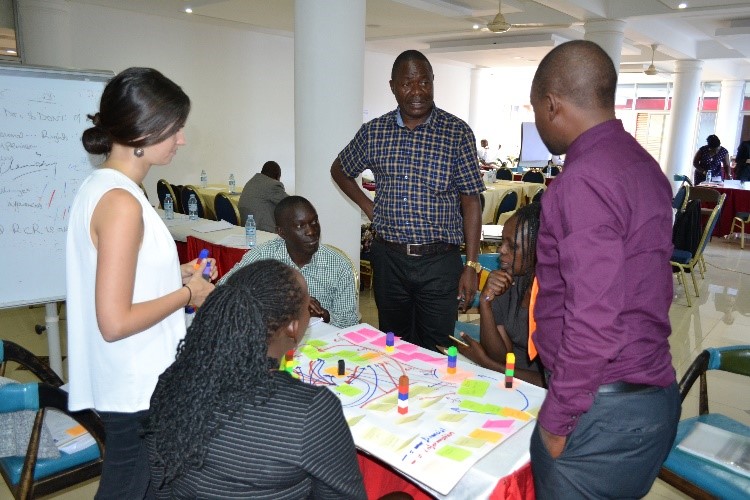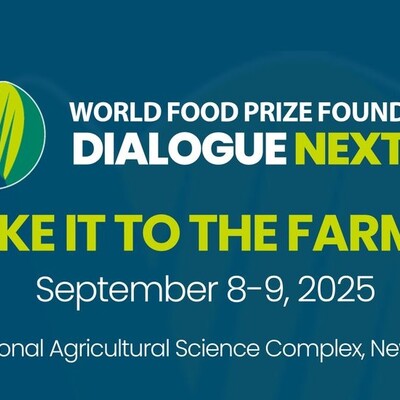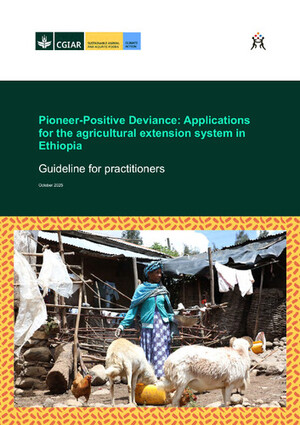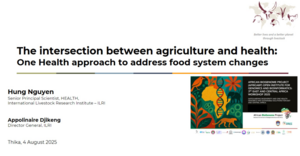
Climate-smart livestock program rolled out in southwestern Uganda
The Program for Climate-Smart Livestock Systems (PCSL) was launched at the national level in Uganda in early April 2019. It aims to increase livestock’s contribution to the three pillars of climate-smart agriculture (CSA) – to sustainably increase agricultural productivity, mitigate greenhouse gas (GHG) emissions and enhance adaptation to climate change across diverse livestock systems and agro-ecological zones in Ethiopia, Kenya and Uganda in the next three years. In Uganda, the main beneficiaries of the project are government, local livestock keepers and the private sector.
Following the launch of the four-year program at the national level, a local launch meeting was carried out in the southwestern district of Mbarara on 11 September 2019. The PCSL team invited representatives from the local governments of Kiruhura, Isingiro and Bushenyi districts. The launch event aimed to i) identify the key stakeholders the program will work with; ii) initiate relationships with the key stakeholders, and iii) solicit inputs from key stakeholders on climate change issues in the region.
In addition to the government representatives at the meeting, the three districts were also represented by farmers, private business owners and farmer cooperatives. Additional participants came from the Mbarara University of Science and Technology, the Mbarara Zonal Agricultural Research and Development Institute and non-governmental organizations (NGOs) that are active in the region – notably SNV Netherlands Development Organisation and Agriterra. During the launch workshop, participants shared their perspectives of climate-change related challenges for livestock keeping in the region.
 Participants of the Program for Climate-Smart Livestock (PCSL) launch in Mbarara, southwestern Uganda (photo credit: ILRI/ Birgit Habermann).
Participants of the Program for Climate-Smart Livestock (PCSL) launch in Mbarara, southwestern Uganda (photo credit: ILRI/ Birgit Habermann).
Introducing the climate-smart livestock program in SW Uganda
The PCSL team was represented by Birgit Habermann, Svenja Marquardt, Edwige Marty, Roland Mugumya and Andrew Kamarabyona. They introduced the project and its activities in a series of brief presentations. The main part of the subsequent discussion focused on the impact of PCSL’s activities on local livestock keepers.
Participants’ concerns included the kind of data that researchers would be collecting, and how local communities would be involved in the design of the program. The researchers clarified that there would be both personal interviews, workshops, as well as data collected directly on-farm, e.g. milk productivity records, weight gains/losses of livestock, and feed sampling and analysis. Livestock keepers will be involved in all these activities. Regarding the adaptation research, it was made clear that results of the first interviews will determine the subsequent direction of the participatory field trials planned for the following year. Selected adaptation practices will then be studied more in detail on-farm together with livestock keepers themselves in a citizen-science approach.
Participants also raised the importance of markets and fluctuating milk prices as a major concern for farmers. In line with this, questions arose on how the affordability of climate-smart agriculture in terms of cost-benefit analysis would be addressed by the project, as it appeared to benefit wealthier farmers rather than those in need of support. This question will be addressed by research conducted by Edwige Marty, a PhD student at the International Livestock Research Institute (ILRI), looking more in-depth into the constraints that affect efforts to adapt to extreme events and climate variability.
Another important issue raised was on the contribution of the PCSL to climate change mitigation. Marquardt, who works with ILRI’s Mazingira Centre clarified that developing reliable livestock GHG emission baselines is a key step towards achieving climate-smart agriculture. The current livestock GHG emission estimates from East African agriculture are based on modelling approaches originally developed and parameterized for developed countries. These countries have different and often highly industrialized livestock farming systems, which make the uncertainty in these estimates high and unrepresentative for east African smallholder farms.
In the project, the Mazingira team will first assess the locally representative GHG emission factors for local ruminant species (e.g. Borana, Ankole long-horned cattle) fed with local diets. In the second step, these GHG emission factors will be combined with household characteristics such as livestock numbers, feeding strategies, income and labour distribution as well as manure management. This will help to identify the most productive management strategies for east African livestock farming systems, that are also most efficient in mitigating GHG emissions.
Another aspect of the PCSL focuses on climate-change adaptation. For this purpose, scoping studies are now starting in southwestern Uganda. Researchers will visit sub-counties in Bushenyi and Kiruhura districts where local government workers and livestock keepers will be interviewed to establish why some livestock keepers are more successful in adapting to climate change than others. This will aid in identifying the adaptation practices and local innovators who can play a prominent role in the participatory field trials to test adaptation practices.
 Group work with ILRI’s Edwige Marty (left) facilitating a discussion during a net mapping exercise. (photo credit: ILRI/ Birgit Habermann).
Group work with ILRI’s Edwige Marty (left) facilitating a discussion during a net mapping exercise. (photo credit: ILRI/ Birgit Habermann).
During the workshop participants took part in a net mapping exercise where they reflected on, and documented, the most relevant and active actors in the development and implementation of climate change adaptation strategies for the livestock sector. The netmaps showed that government actors focused very strongly on the role of the Ministry of Agriculture, Animal Industry and Fisheries and stakeholders outside of the region, such as Makerere University, rather than on local actors. In addition, participants emphasized the media as an important influential factor in consumers’ behaviour and choices. The two other groups, made of a mix of actors including government officials, NGO and research organizations’ representatives, farmers and private sector players, had contrasting views. Some participants perceived farmers to have a higher influence on the development and implementation of livestock interventions, while another group allocated more influence to donors, government and NGOs, and little influence to farmers. These discussions showed the complexity of interactions between the actors involved, especially when it comes to the (non-)regulation of market prices. Even the role of NGOs in the region was seen as more business-oriented according to participants.
Thereafter, the participants identified challenges related to climate and environmental changes and the livestock sector. This exercise helped the PCSL team to better understand the diverse perspectives of local stakeholders on existing and possible future challenges in climate change mitigation. The participants also pointed out the socio-economic consequences of challenges like drought, water shortages, flooding, landslides and increases in livestock disease occurrence. The effects of these challenges on people’s lives are migration, especially of youth, and an increasing burden on women and domestic violence. In addition to limitations on agricultural productivity, the encroachment on swamp areas and environmental pollution were mentioned as growing problems.
 Svenja Marquardt (ILRI) facilitating group work on environmental and climate change-related challenges for livestock management (photo credit: ILRI/ Birgit Habermann).
Svenja Marquardt (ILRI) facilitating group work on environmental and climate change-related challenges for livestock management (photo credit: ILRI/ Birgit Habermann).
Participants also worked in groups to better understand community variability and how local livestock keepers can develop innovations and adapt to perceived challenges. They came up with their definitions of success and described what makes a successful livestock farmer and why. While one group defined the amount of land, increasing production levels and wealth as indicators of success, the second group selected total yield and productivity per animal as their primary indicators of success, the third one being the profitability of the farm. The definition of ‘livestock keeper’ resulted in 10 different categories in the group of farmers, NGOs and private sector, and in seven different categories in the government group. This shows the diversity of the livestock sector at farm level in southwestern Uganda and gives a good indication of the complexity of the socio-economic and agro-ecological conditions researchers of the PCSL team will have to take into account.
After the PCSL launch in Mbarara, the
researchers will collect data from the field and facilitate stakeholders’ engagement
with the issues raised during the launch workshop to spur positive change in
the community.
The PCSL is funded by the German
Federal Ministry for Economic Cooperation and Development (BMZ) through the
German Corporation for International Cooperation GmbH (GIZ).
This blog was co-authored by ILRI’s Birgit Habermann, a post-doctoral scientist working on innovation and social issues of climate change adaptation; Svenja Marquardt, animal nutrition scientist working on generating data on livestock systems and region-specific enteric methane emission factors; Edwige Marty, a PhD student working on the political economy of climate change adaptation in the East African livestock systems, and Roland Mugumya, a research support specialist.
Read related content here:
Program to support climate-smart livestock systems launched in Ethiopia



















